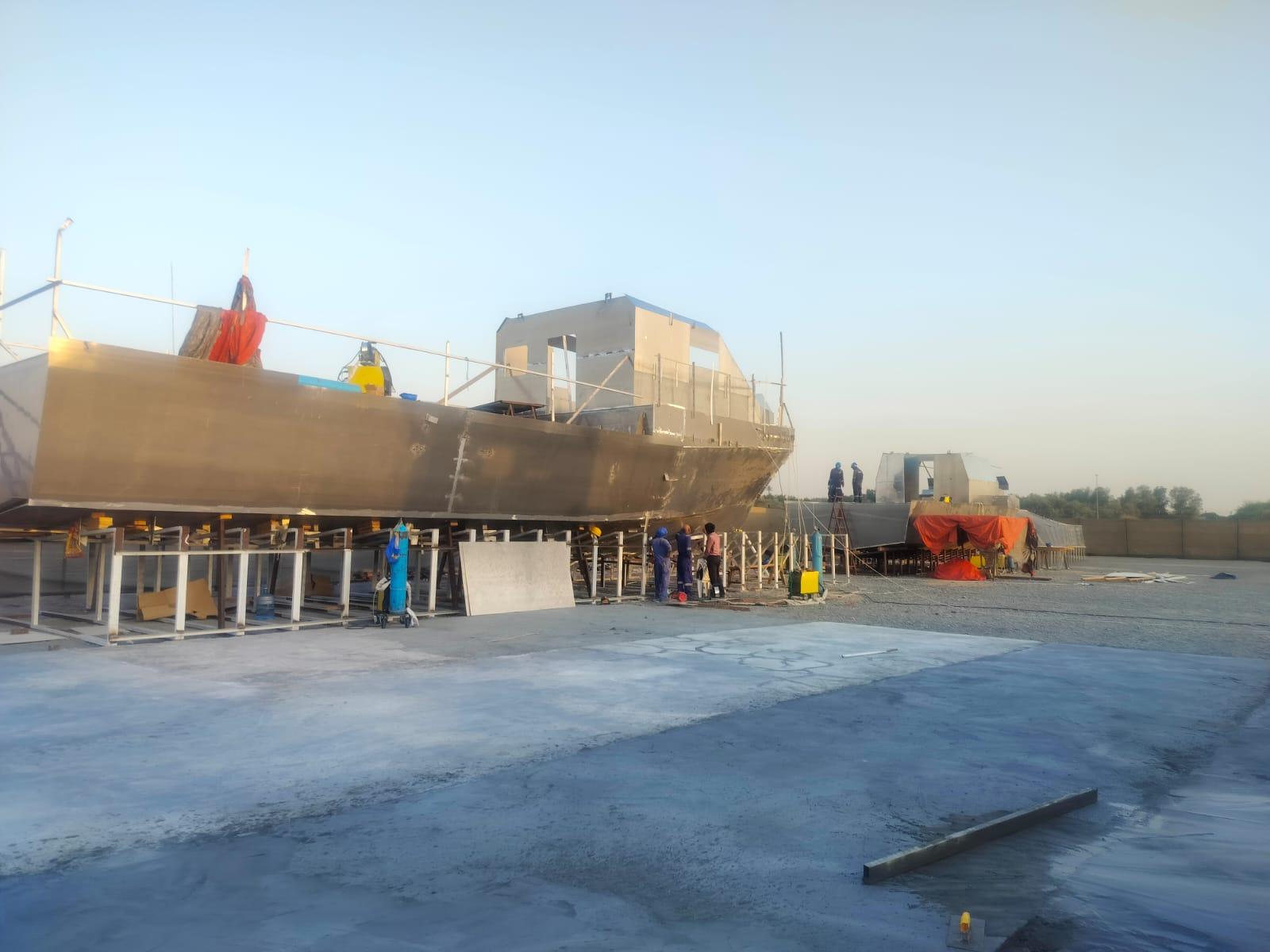How Aluminium Barge Manufacturers are Shaping Modern Marine Logistics

Marine logistics is evolving rapidly, spurred by more intelligent design and the use of light materials. At the very forefront of this evolution are aluminium barge manufacturers who redefine what ships that carry cargo can be. By utilizing marine-grade aluminium in lieu of conventional steel, they assist with fuel consumption reduction, cost savings, and increased vessel life — all while facilitating cleaner supply chains.
A prime example is VU Marine, a barge constructor specializing in light, corrosion-proof aluminium barges. These can be 40% lighter than steel barges, meaning direct cost savings. Barge industry reports indicate that lighter barges will save fuel by 15–20% per year, a significant consideration when shipping still contributes to approximately 3% of world CO₂ emissions (International Maritime Organization, 2022).
Why lighter barges matter
Aluminium's weight is roughly one-third steel. That makes aluminium barges inherently lighter without being weaker. Lighter ships require less powerful engines or smaller engine loads, which cost less over time. Operating information indicates cost savings of between 10–15% due to lower fuel consumption alone.
In addition to fuel, aluminium also resists corrosion more efficiently. Lower maintenance is the result. Whereas steel hulls require constant repainting and anti-rust coating, aluminium barges can reduce maintenance expenses by as much as 25%. Furthermore, aluminium ships can also last 30–40 years, as opposed to about 20–25 years for most steel barges that are seaworthy.
Special designs for new cargo
Another reason why aluminium is transforming the industry: flexibility. Contemporary barge builders in UAE, such as VU Marine, create bespoke layouts to suit individual cargo: containers, aggregates, liquid tanks, and special equipment.
Aluminium's strength-to-weight ratio makes possible shallow-draft barges that are able to operate on rivers, canals, and coastal waters where heavier steel barges cannot travel. Inland waterways transport nearly 25% of internal freight in certain nations, states the World Bank. Since water levels tend to recede during dry weather, shallow-draft aluminium barges maintain commerce flowing.
Speedier build times, speedier delivery
Aluminium isn't only kinder to the water — it's kinder in the backyard as well. In comparison to steel, aluminium sections are lighter, so construction is quicker. Industry projections indicate aluminium barges can be constructed 15–20% faster than similar steelboats. That efficiency allows operators to increase fleets to meet increasing demand.
Speed of construction is important as maritime logistics expands. OECD statistics estimate more than 12 billion tons of world cargo by 2030. When vessels require replacement or new capacity needs to be brought online in a hurry, aluminium facilitates.
Aiding in regional and local trade
Short-sea shipping is flourishing — delivering freight from small ports, coastal communities, and river centers. New aluminium barges, particularly in the 300–800 ton bracket, are well suited. They're cheaper to use and more manageable to navigate in shallow, narrow waterways.
A 2023 report from the International Transport Forum highlighted that moving regional freight off roads and onto water would reduce carbon emissions by 20–30% and alleviate road congestion. Aluminium barges render these small but essential journeys economic and sustainable.
Innovation and modular design
Shipbuilders today apply computer-based design technologies — 3D modeling, simulation, and real-time structural analysis — to optimize hull shapes and increase efficiency. VU Marine integrates these tools with modular assembly. Components can be produced in one place and assembled near the customer's dock, reducing oversized transport costs and shaving weeks off delivery time.
The green advantage
Environmental controls are getting stricter around the globe. Less fuel is consumed by ships with lighter aluminium barges, reducing emissions without loss of performance. It's not just about compliance for operators — it's an actual financial incentive. As marine fuel prices increase, a ship that saves 15–20% on annual fuel expenses can pay back its increased initial cost much more quickly.
Ahead, OECD projections are that demand for short-sea shipping and inland water transport may increase by 25% by 2035. Aluminium enables fleets to grow sustainably.
The contribution of aluminium barge builders
Aluminium barge builders is no longer a niche market. It's transforming the marine logistics industry: lighter ships that are cheaper to operate, more durable, and have a lower carbon footprint. Cases like VU Marine show that better design and smarter materials can reinvent even an old industry.
By reducing operating expense and emissions, aluminium barges keep commerce flowing as demand increases. For inland waterways, coastal routes, and port service, aluminium is the natural solution.
Conclusion
From deep ports to shallow rivers, today's marine logistics requires more out of less. Due to lighter weight, extended service life, and reduced maintenance, aluminium barges are rising to that challenge.
With help from dedicated aluminum building company like VU Marine, the industry is not just adapting — it’s improving. As trade volumes rise and environmental standards tighten, aluminium barge manufacturers are quietly becoming key players in keeping the world’s cargo flowing efficiently and sustainably.
- Vibnix Blog
- Politics
- News
- Liberia News
- Entertainment
- Technology
- Образование
- Art
- Causes
- Crafts
- Dance
- Drinks
- Film
- Fitness
- Food
- Игры
- Gardening
- Health
- Главная
- Literature
- Music
- Networking
- Другое
- Party
- Religion
- Shopping
- Sports
- Theater
- Wellness


